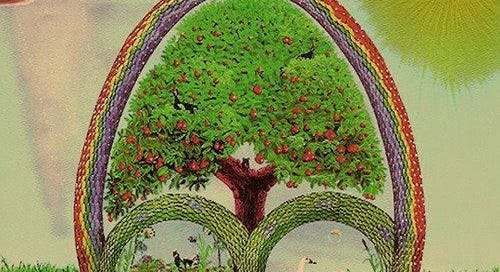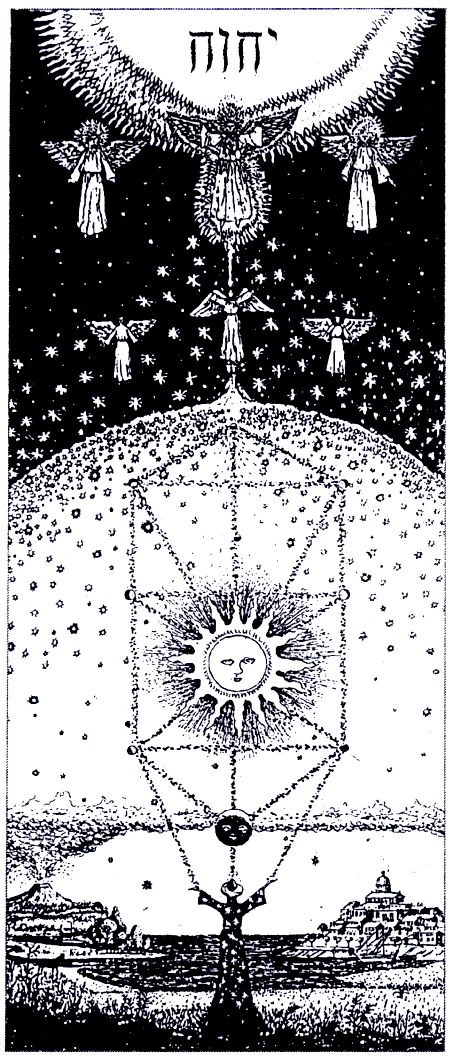exploration of the soul, from a mystic
A cross-cultural musing on the soul; its many sacred names, structures, and the shared belief that the divine dwells within us.
In every culture we define the undefinable. This eternal flame dancing, which enraptures life to it and through it.
The chosen word often loosely translates to breath, head, or life source. It is denoted by many tongues— Atman of the Vedic tradition, Ruh of the Sufis, Manitou of the Anishinaabe, Ojibwe, and Cree, Orí of the Yoruba, Neshama of the Kabbalah, and so forth.
Recognition of the soul knows no bounds, as it is intuited by the wisdom of the heart. It has always been named. This knowledge is both ancient and prescient; a concept that connects us to our morality, higher mind, and sense of unity. It is incapable of being erased from the collective mind because it is inherent.
The sufis describe Ruh as “The spirit (which) endeavours to pull the heart towards Allah, while the lower self exerts a downward pull on the heart.”1 It is the depth within all beings, the center within that is one with the creator, the eternal essence which draws us to the perfection of Source/God/Allah. Ruh is inseparable from its divine source, even when dwelling in the human form. The body, mind, and lower self can veil or obscure it, but cannot sever it from the Divine.
The Yoruba people describe Orí as “the invisible self within the self, or, to use the Yoruba description, it is “the self that dances in front of the mat”… “the mat is the symbol of the unity of all creation”2 This self is beyond comprehension as it arises from the Source of all intelligence and creativity.
Hindus describe Atman as the an eternal and consistent force within all beings, the most authentic and true essence which “transcends the temporal and material world”.3 This quality is what connects us to eternity, whereas our “self” is only possible through having limitations. To put it plainly, imagine an ocean, and then a jar of water floating in the ocean. Source or God is the ocean, our “self” is that Jar, and the water inside (which is the same as the ocean) is our Atman.
Neshama, of the Kabbalah, is one of the levels/aspects of the soul, representing the higher, intellectual essence, concentrated awareness, the divine mind. In interpretations of the Kabbalah, Neshama is “an extension of the Divine itself”4, suggesting that our connection to source is intrinsic.
These practices span continents and were established during different time periods, but all point to similar ideas— The connection to God and our Soul is something intrinsic within. It is sacred and protected.
We are not yearning for connection to the divine because of it’s absence, but rather because we long to unearth and clear dirt away from all that distracts or separates us from our true essence— our soul.
How can I access my soul more deeply, and what is this unknowable yet deeply significant aspect of being?
Mystics have explored this question forever. An answer of many answers lies in the conferred qualities or characteristics different practices believe make up the Soul.
In the Kabbalah, which is a form of Jewish mysticism, these attributes are represented by The Tree of Life (עץ חיים).5 Expressions or characteristics of the divine are condensed downward into the ten sefirot (aspects/channels). They are not severed from god, but rather are emanating from god into creation. The sefirot are connected by 22 paths, representing the dynamic interaction between the attributes.
The 10 sefirot of The Tree of Life are:
Keter (Crown)
Hokhmah (Wisdom)
Binah (Understanding)
Hesed (Mercy)
Gevurah (Justice)
Tiferet (Beauty)
Nezah (Eternity)
Hod (Glory)
Yesod (Foundation)
Shekhinah (the feminine aspect of God) or Malkhut (Royalty)6
Every religion has a deeper, mystical interpretation of the soul and what it means to be a soul. It is through conscious embodying of each beneficent quality (of the many different practices) that we align more with Source and gravitate toward the path of enlightenment. Our connection to the soul is not something another person, doctrine, or leader can be a middleman for us- it is inherently within. Research can give us keys to doors we may have never considered, but none change the reality that our souls are already intimately “one” with the Source, The All, God, Allah.
-August
Lunae Speculum
If you enjoyed this article - Subscribe to learn more about philosophy, psychology, and other religions/spiritual practices. Stay tuned for how to connect more with the divine channel within yourself, by yourself (through practices that I’ve found work for me and hope help you as well).
Subscribe to paid sub for specific articles diving deeper into topics like the wisdom of octopuses, the tree of life, connecting to your higher self, using tarot as a tool for spiritual growth and self discovery, and other intriguing essays.
☟
Sufi Terminology by Murshid F.A. Ali ElSenossi https://www.almirajsuficentre.org.au/qamus/app/single/1278
African Traditional Religions: Ifa https://atla.libguides.com/c.php?g=1138564&p=8384978#:~:text=Ori%20is%20the%20mystery%20of,the%20unity%20of%20all%20creation.
The concept of atman (soul) in Hinduism https://www.hinducreed.com/concept-of-atman-soul-in-hinduism/
Kabbalistic Insights into the G-dly Soul https://www.meaningfullife.com/kabbalistic-insights-into-the-g-dly-soul/
https://www.pinkdiamondguide.com/pages/the-kabbalah-tree-of-life-divine-roadmap?srsltid=AfmBOop76V4lff28HOP8_HbBd_AUYvksYfoZg57TvtcBGn4kjYfio73k
https://www.sefaria.org/sheets/158035.11?lang=bi&with=all&lang2=en






I LOVE this sm 💙 I genuinely can’t wait to read more from you on this topic. Connection to Source is something I’ve been cultivating over the years - I love how you phrased it’s not a connection to an “outside” but rather from within ourselves.